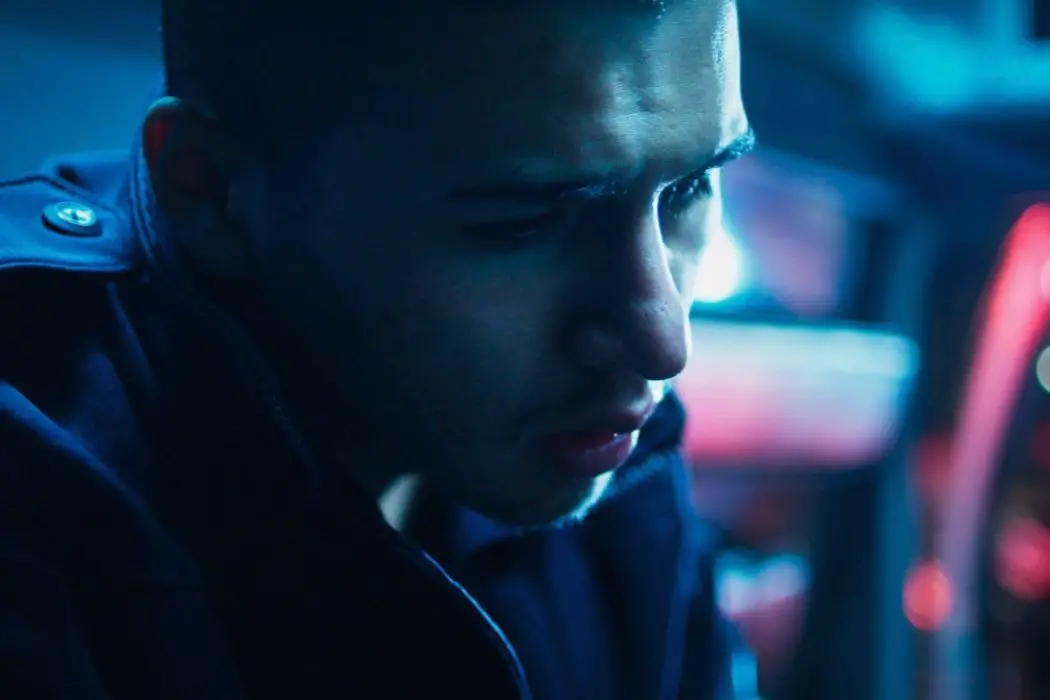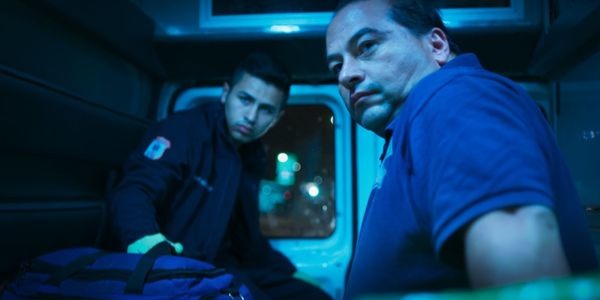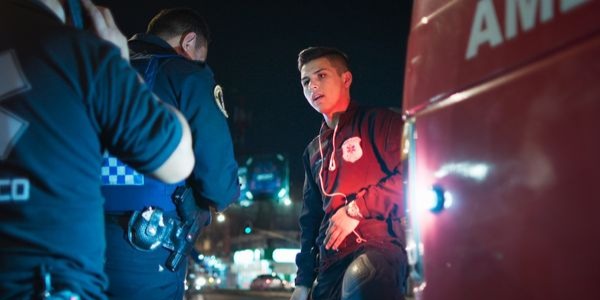MIDNIGHT FAMILY: A Bleaker-Than-Fiction Look At Family Emergency Care

An overwhelmed and underdressed film writer based in New York.…
Before you can even start to form an opinion of the documentary Midnight Family, a statistic splays across the screen.
“In Mexico City, the government operates less than 45 emergency ambulances for a 9 million population [of residents].”
Immediately, you’re invested in this ambulance screeching down the Mexico City streets in the middle of the night. The Ochoas fill the vehicle, a family with a private ambulance business, one far less lucrative than you might originally think. The film follows the Ochoas through a few days of work, highlighting their poverty-level existence, their itch to help others, and their daily highs and lows.
Documentarian Luke Lorentzen gets about as involved as you can be, shooting inside of the ambulance for the majority of the 80 minute film. He paints a bleak picture of the emergency care situation in Mexico City, and an even bleaker picture of the families, those with health supplies and those that need it, attempting to survive in this industry. Midnight Family forms into a piece of fact that hurts to watch, but undeniable to ignore.
A Family With Moral And Monetary Backbones
Lorentzen makes certain you understand the importance of the Ochoa family’s line of work. We see people wait 40 minutes for an ambulance, only for this small family to save the day, transporting the injured to local hospitals yet not getting paid at the end of the trip. They struggle as any family in poverty would, yet their problems feel heightened by their shared occupation, one that provides cans of tuna and crackers for nightly meals.

The issue of money remains constant throughout the film, and we see the monetary side of their business kick in about midway through the documentary. The Ochoas take patients to farther, private hospitals, lying to these ambulance riders about the availability of the cheaper, public hospitals. These trips ensure a pay day for the family, though they might not be what’s best for the injured and in some cases, the dying. The documentary, and the family, walk in the greys of morality, getting the benefit-of-the-doubt due to the overall goodness they provide in Mexico City.
The portrait of the family resonates due to their collective, humanistic desire and subsequent collision of aiding one another and society as a whole. They’re trying their best. Aren’t we all?
Danger And Dying
Due to the inherent nature of this career path, the family encounters danger and death on a daily basis. They speed through the streets of Mexico City in a race to be the first ambulance at the scene of an accident. They all, including the youngest son who sometimes would rather skip school than miss a day/night in the van, see and know pain and death on a personal basis. It’s all part of the job.

The documentary takes time to explore the politics around this industry as well, focusing in on the bribery of cops and the issues the family faces if these bribes aren’t given. License plates. Medical equipment. Insurance. More paperwork than you can imagine. All of those specificities give the governmental organization in Mexico City to shut down the Ochoas.
They perform a balancing act every night, attempting to make money, evade ticketing and arrests, while also being a provider to those in need. Some nights, such as one of the last nights filmed in the doc, their patients die en route to the hospital, because they brought them to a further hospital. You have an inkling that this balancing act won’t end once the filming stops, and these struggles will continue long into the future.
Power In Simplicity
Midnight Family excels in the irregularity of this Ochoa’s “normal”. The routine of the family sets a clear direction for the documentary, and Lorentzen’s ability to film inside of the ambulance brings intensity to this simplicity.
Powerful both in message and in content, the documentary warrants more than just a watch. Give it your full attention. The Ochoas need, and deserve, more than just your attention.
What was your favorite documentary of 2019? Share your top docs in the comments!
Midnight Family was released December 6, 2019.
Does content like this matter to you?
Become a Member and support film journalism. Unlock access to all of Film Inquiry`s great articles. Join a community of like-minded readers who are passionate about cinema - get access to our private members Network, give back to independent filmmakers, and more.
An overwhelmed and underdressed film writer based in New York. Trying to write about media from a regular, young person's point of view. Once passed John Oliver outside of a brunch spot, which is still my claim to fame.













